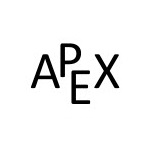1.3.1: Ejercicios 1.3
- Page ID
- 113974
\( \newcommand{\vecs}[1]{\overset { \scriptstyle \rightharpoonup} {\mathbf{#1}} } \)
\( \newcommand{\vecd}[1]{\overset{-\!-\!\rightharpoonup}{\vphantom{a}\smash {#1}}} \)
\( \newcommand{\id}{\mathrm{id}}\) \( \newcommand{\Span}{\mathrm{span}}\)
( \newcommand{\kernel}{\mathrm{null}\,}\) \( \newcommand{\range}{\mathrm{range}\,}\)
\( \newcommand{\RealPart}{\mathrm{Re}}\) \( \newcommand{\ImaginaryPart}{\mathrm{Im}}\)
\( \newcommand{\Argument}{\mathrm{Arg}}\) \( \newcommand{\norm}[1]{\| #1 \|}\)
\( \newcommand{\inner}[2]{\langle #1, #2 \rangle}\)
\( \newcommand{\Span}{\mathrm{span}}\)
\( \newcommand{\id}{\mathrm{id}}\)
\( \newcommand{\Span}{\mathrm{span}}\)
\( \newcommand{\kernel}{\mathrm{null}\,}\)
\( \newcommand{\range}{\mathrm{range}\,}\)
\( \newcommand{\RealPart}{\mathrm{Re}}\)
\( \newcommand{\ImaginaryPart}{\mathrm{Im}}\)
\( \newcommand{\Argument}{\mathrm{Arg}}\)
\( \newcommand{\norm}[1]{\| #1 \|}\)
\( \newcommand{\inner}[2]{\langle #1, #2 \rangle}\)
\( \newcommand{\Span}{\mathrm{span}}\) \( \newcommand{\AA}{\unicode[.8,0]{x212B}}\)
\( \newcommand{\vectorA}[1]{\vec{#1}} % arrow\)
\( \newcommand{\vectorAt}[1]{\vec{\text{#1}}} % arrow\)
\( \newcommand{\vectorB}[1]{\overset { \scriptstyle \rightharpoonup} {\mathbf{#1}} } \)
\( \newcommand{\vectorC}[1]{\textbf{#1}} \)
\( \newcommand{\vectorD}[1]{\overrightarrow{#1}} \)
\( \newcommand{\vectorDt}[1]{\overrightarrow{\text{#1}}} \)
\( \newcommand{\vectE}[1]{\overset{-\!-\!\rightharpoonup}{\vphantom{a}\smash{\mathbf {#1}}}} \)
\( \newcommand{\vecs}[1]{\overset { \scriptstyle \rightharpoonup} {\mathbf{#1}} } \)
\( \newcommand{\vecd}[1]{\overset{-\!-\!\rightharpoonup}{\vphantom{a}\smash {#1}}} \)
Términos y Conceptos
Ejercicio\(\PageIndex{1}\)
En sus propias palabras, explique la relación entre factores y raíces.
- Responder
-
Un nswers variará.
Ejercicio\(\PageIndex{2}\)
Si\(x=2\), \(x=5\),and \(x=-1\) are the only roots of the function \(f(x)\), what are the factors of \(f(x)\)?
- Responder
-
Los factores son\(x-2\), \(x-5\), and \(x+1\).
Ejercicio\(\PageIndex{3}\)
¿Qué significa que una cuadrática sea irreducible?
- Responder
-
Significa que no tiene raíces de números reales y que no se puede factorizar.
Ejercicio\(\PageIndex{4}\)
¿Cuál es el número máximo de factores lineales que\(g(t) = t^6+t^4-2t^2 +1\) could have?
- Responder
-
Puede tener un máximo de 6 factores lineales ya que es un polinomio de sexto grado.
Ejercicio\(\PageIndex{5}\)
¿Cuál es el número máximo de raíces que\(g(t) = t^6+t^4-2t^2 +1\) could have?
- Responder
-
Puede tener un máximo de 6 raíces ya que es un polinomio de sexto grado.
Problemas
En ejercicios\(\PageIndex{6}\) -\(\PageIndex{12}\), ampliar y simplificar las expresiones dadas.
Ejercicio\(\PageIndex{6}\)
\(3a(2b+5)(a-2b)\)
- Responder
-
\(6a^2b-12ab^2+15a^2-30ab\)
Ejercicio\(\PageIndex{7}\)
\((2t+7)^2\)
- Responder
-
\(4t^2 + 28t+49\)
Ejercicio\(\PageIndex{8}\)
\(2(x^2+3x+4)(2x+3)\)
- Responder
-
\(4x^3+18x^2+34x+24\)
Ejercicio\(\PageIndex{9}\)
\((t^2-3t+1)(2t)-(t^2+2)(2t-3)\)
- Responder
-
\(-3t^2-2t+6\)
Ejercicio\(\PageIndex{10}\)
\((x^3+x-2)(2)-(2x+1)(3x^2+1)\)
- Responder
-
\(-4x^3-3x^2-5\)
Ejercicio\(\PageIndex{11}\)
\((x^2+3x-1)(4x)+(2x^2-5)(2x+3)\)
- Responder
-
\(8x^3+18x^2-14x-15\)
Ejercicio\(\PageIndex{12}\)
\(3(\theta^2+4)^2(2\theta)\)
- Responder
-
\(6\theta^5+48\theta^3+96\theta\)
En ejercicios\(\PageIndex{13}\) -\(\PageIndex{20}\), factorizar cada función completamente.
Ejercicio\(\PageIndex{13}\)
\(g(x)=4x^2+4x+1\)
- Responder
-
\(g(x)=(2x+1)^2\)
Ejercicio\(\PageIndex{14}\)
\(y(z)=z^2-7z+10\)
- Responder
-
\(y(z)=(z-5)(z-2)\)
Ejercicio\(\PageIndex{15}\)
\(f(k)=k^4-27k\)
- Responder
-
\(f(k)=k(k-3)(k^2+3k+9)\)
Ejercicio\(\PageIndex{16}\)
\(\theta(\gamma) = 6\gamma^2-\gamma -2\)
- Responder
-
\(\theta(\gamma) = (3\gamma-2)(2\gamma+1)\)
Ejercicio\(\PageIndex{17}\)
\(x(z) = 3z^3+6z^2-24z\)
- Responder
-
\(x(z)=3z(z+4)(z-2)\)
Ejercicio\(\PageIndex{18}\)
\(y(x)=x^3+8\)
- Responder
-
\(y(x)=(x+2)(x^2-2x+4)\)
Ejercicio\(\PageIndex{19}\)
\(f(x)=2x^3 -x^2 -5x-2\)
- Responder
-
\(f(x)=(2x+1)(x-2)(x+1)\)
Ejercicio\(\PageIndex{20}\)
\(f(y)=y^3-5y^2-2y+24\)
- Responder
-
\(f(y)=(y-3)(y-4)(y+2)\)
En ejercicios\(\PageIndex{21}\) -\(\PageIndex{24}\), determinar el cociente de diferencia de la función dada.
Ejercicio\(\PageIndex{21}\)
\(g(t)=t^3+1\)
- Responder
-
\(3t^2+3th+h^2\)
Ejercicio\(\PageIndex{22}\)
\(y(x)=2x^2-5\)
- Responder
-
\(4x+2h\)
Ejercicio\(\PageIndex{23}\)
\(f(x)=x^3+x^2 -x\)
- Responder
-
\(3x^2+3xh+h^2+2x+h-1\)
Ejercicio\(\PageIndex{24}\)
\(g(x)=4x^2+2x\)
- Responder
-
\(8x+4h^2+2\)
En los ejercicios\(\PageIndex{25}\) -\(\PageIndex{27}\), encuentra todas las raíces reales de la función dada.
Ejercicio\(\PageIndex{25}\)
\(g(x)=4x^2+2x\)
- Responder
-
\(x=0\) and \(x=-\frac{1}{2}\)
Ejercicio\(\PageIndex{26}\)
\(f(x)=x^3+x^2 -x\)
- Responder
-
\(x=0\), \(x=\frac{-1+\sqrt{5}}{2}\), and \(x=\frac{-1-\sqrt{5}}{2}\)
Ejercicio\(\PageIndex{27}\)
\(y(x)=4x^2-5\)
- Responder
-
\(x=\frac{\sqrt{5}}{2}\) and \(x=-\frac{\sqrt{5}}{2}\)
En los ejercicios\(\PageIndex{28}\) -\(\PageIndex{30}\), factificar la función dada, y relacionar los factores con las raíces que se encuentran en los ejercicios\(\PageIndex{25}\) -\(\PageIndex{27}\).
Ejercicio\(\PageIndex{28}\)
\(g(x)=4x^2+2x\)
- Responder
-
\(g(x) = 2x(2x+1)\); the factor \(x\) pairs with the root \(x=0\) and the factor \(2x+1\) pairs with the root \(x=-\frac{1}{2}\)
Ejercicio\(\PageIndex{29}\)
\(f(x)=x^3+x^2 -x\)
- Responder
-
\(f(x) = x(x+ \frac{1-\sqrt{5}}{2})(x+\frac{1+\sqrt{5}}{2})\); the factor \(x\) pairs with the root \(x=0\), the factor \(x + \frac{1-\sqrt{5}}{2}\) pairs with the root \(x=\frac{-1+\sqrt{5}}{2}\), and the factor \(x+\frac{1-\sqrt{5}}{2}\) pairs with the root \(x=\frac{-1-\sqrt{5}}{2}\)
Ejercicio\(\PageIndex{30}\)
\(y(x)=4x^2-5\)
- Responder
-
\(y(x) = 4(x-\frac{\sqrt{5}}{2})(x+\frac{\sqrt{5}}{2})\); the factor \(x-\frac{\sqrt{5}}{2}\) pairs with the root \(x=\frac{\sqrt{5}}{2}\) and the factor \(x+\frac{\sqrt{5}}{2}\) pairs with the root \(x=-\frac{\sqrt{5}}{2}\)


